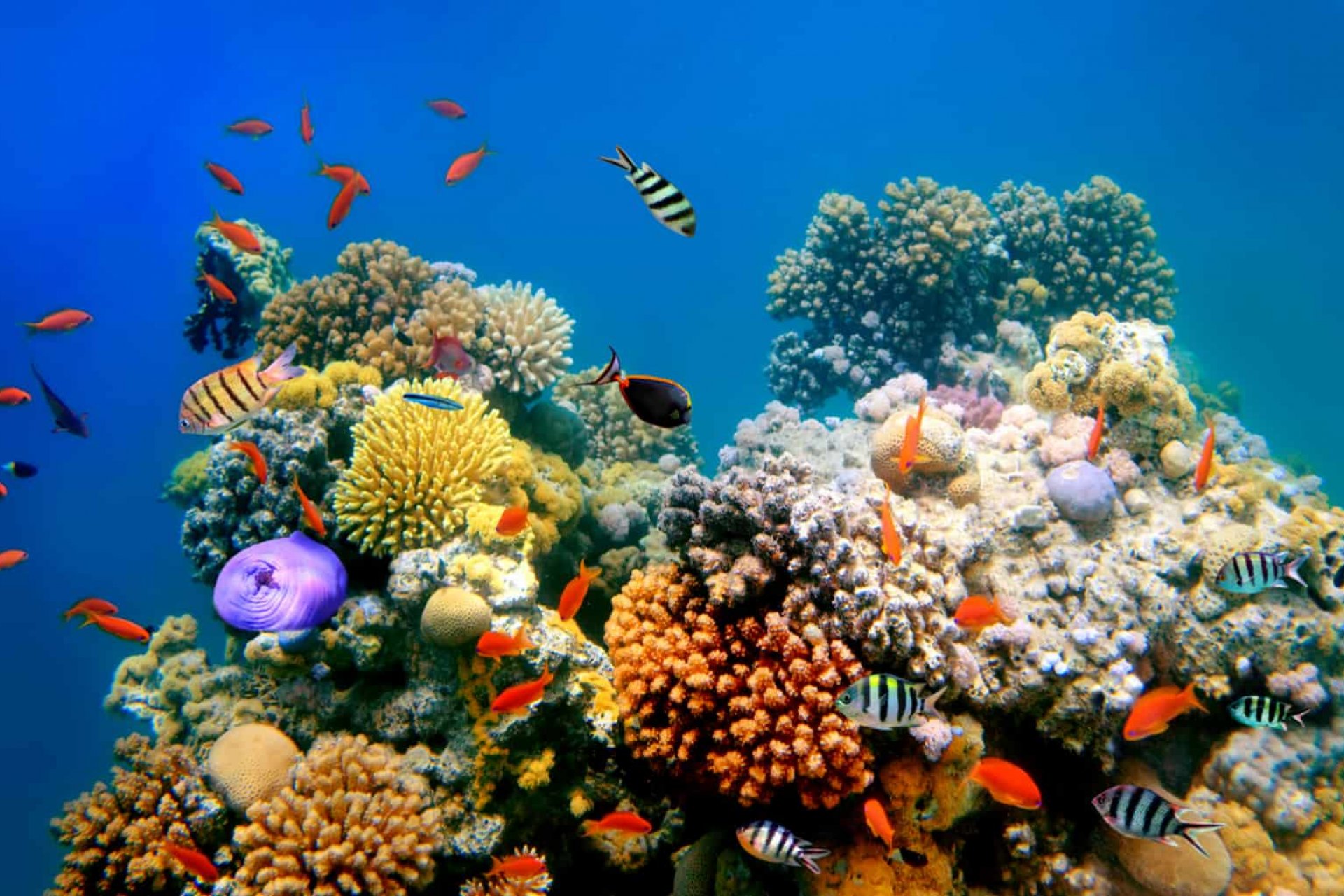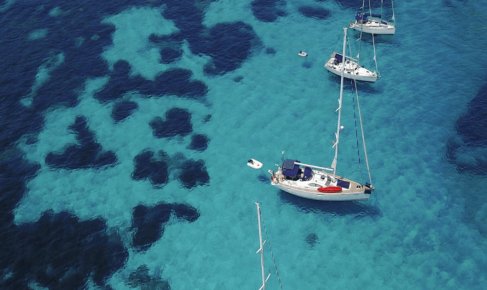
A vibrant, hidden world lies beneath the world’s oceans: coral reefs. They are not only critical for sustaining marine life but also captivate divers with their stunning beauty. However, coral reefs are more than just aesthetic wonders; they are indispensable ecosystems for the planet. In this article, we explore everything you need to know about coral reefs in detail.
What is a Coral Reef?
Coral reefs are essentially massive underwater structures formed by thousands or even millions of tiny living organisms called polyps. Coral polyps secrete limestone (calcium carbonate) to protect themselves from external threats, and over time, these deposits accumulate to form these impressive reef structures.
Reefs usually form in tropical and shallow waters because coral polyps depend on sunlight. This is why they are commonly found between 30° north and south latitudes, in areas less than 50 meters deep. However, due to climate change, rising ocean temperatures, and human activity, this fragile ecosystem is under serious threat.
How Do Corals Form?
The formation of corals is a natural miracle that takes millions of years. Each coral polyp is a very small organism; however, they live in colonies. Polyps build rigid structures around themselves by secreting calcium carbonate. Over time, these structures grow and form coral reefs.
Corals live in a symbiotic relationship with microscopic algae called zooxanthellae. These algae perform photosynthesis using sunlight and provide nutrients to the coral. In return, the algae gain a protected habitat within the coral. This relationship is vital for the survival of the coral.
Types of Coral Reefs
Coral reefs are divided into 3 main types:
1. Fringing Reefs
These reefs are directly attached to the shoreline and commonly form around tropical islands. They are the most common type and also the most affected by human activity.
2. Barrier Reefs
These reefs run parallel to the shore with a lagoon in between. They are quite large. The most famous example is the Great Barrier Reef in Australia. Being farther from shore, they tend to support richer biodiversity.
3. Atolls
Atolls are ring-shaped reefs formed around the cones of extinct volcanoes. As the volcanic island subsides over time, the surrounding coral continues to grow. Eventually, a ring of coral with a central lagoon is formed.
Importance of Coral Reefs to Ecosystems
Coral reefs are among the most biodiverse ecosystems on Earth. Although they cover only about 1% of the ocean floor, they support nearly 25% of all marine life. In a sense, they are the Amazon rainforests of the oceans.
Additionally, coral reefs protect coastlines from erosion. They absorb the energy of waves and storms, helping to safeguard coastal areas. Many fisheries operate around coral reefs, and reef-related tourism contributes significantly to many national economies.
Marine Life in Coral Reefs
Coral reefs are living laboratories full of life: thousands of fish species, crustaceans, sponges, sea turtles, mollusks, and of course, corals themselves. Colorful parrotfish, predatory barracudas, lizardfish, starfish, and cuttlefish are common.
Reefs also serve as nurseries for juvenile fish. Calm and sheltered waters allow young fish to grow safely before they move out to deeper waters, playing a critical role in the sustainability of the ocean ecosystem.
What is Coral Bleaching?
Coral bleaching occurs when corals lose the algae (zooxanthellae) with which they live in symbiosis. This usually happens due to rising sea temperatures. These algae not only provide color to the coral but also essential nutrients. When stressed, corals expel these algae and turn white.
Bleached corals are not necessarily dead, but they are weakened. If stressors persist, the corals may die completely. In recent years, due to global warming, coral bleaching events have increased significantly, posing one of the greatest threats to coral ecosystems.
Threats to Coral Reefs
Coral reefs are among the world’s most delicate natural systems and face numerous threats:
-
Global Warming: Increases ocean temperatures, leading to bleaching and coral death.
-
Ocean Acidification: Excess CO₂ from the atmosphere dissolves into oceans, increasing acidity and hampering coral calcification.
-
Pollution: Agricultural runoff, sewage, plastics, and detergents cause extensive damage.
-
Overfishing: Disrupts the food chain. Harmful methods like explosives physically destroy reefs.
-
Tourism: Careless divers, boat anchors, and physical contact with reefs cause serious degradation.
How Can We Protect Coral Reefs?
Protecting coral reefs is not just the job of environmentalists—it’s everyone’s responsibility. Here are some protective measures:
-
Reduce Carbon Footprint: Use less fuel, conserve energy, and choose sustainable products to reduce greenhouse gases.
-
Eco-Friendly Tourism: Choose operators that respect reefs. Never step on corals or touch marine life.
-
Reduce Plastic Use: Plastics harm coral reefs both physically and chemically.
-
Education and Awareness: Educate your children and community about the importance of coral reefs.
-
Establish Marine Protected Areas: Declaring reef regions as marine parks helps protect them from fishing and construction.
World’s Most Famous Coral Reefs
1. Great Barrier Reef (Australia)
The largest coral reef system in the world, stretching over 2,300 km and visible from space. Home to approximately 1,500 fish species and 400 coral types.
2. Belize Barrier Reef (Caribbean)
The world’s second-largest reef system. Listed as a UNESCO World Heritage Site, rich in Caribbean biodiversity.
3. Raja Ampat (Indonesia)
The region with the most coral diversity on Earth. A top destination for diving enthusiasts.
4. Red Sea Coral Reef (Red Sea)
Known for its resilience despite warm waters. Extends along the coasts of Egypt, Sudan, and Eritrea.
Corals Are Not Just Underwater Creatures—They Are Our Future
Coral reefs are not just stunning natural phenomena; they are vital to maintaining ecological balance. They are homes for fish, wave breakers, and a livelihood source for millions. Sadly, human activities and climate change pose great threats to them.
However, with conscious action and sustainable practices, it is still possible to save coral reefs.
Every step you take for this vibrant, silent, yet powerful underwater world helps protect both nature and humanity.

 Türkçe
Türkçe Русский
Русский














